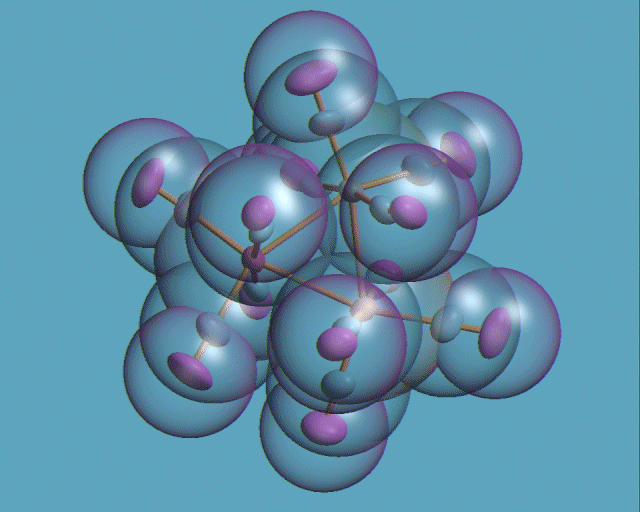

My major areas of research interest are:
Synthesis and structural variability in heteroplatinum clusters
We have prepared a number of examples of small heteroplatinum and palladium clusters which exhibit a remarkable diversity in the structure of the metal skeleton. One example is the cluster Ru3Pt(mu-H)(mu4-NO)(CO)10(P-Pr3) which contains an highly unusual mu-eta2-nitrosyl group. Standard electron counting rules cannot account for this variability, but we believe it is due to the flexibility of platinum with regard to its electronic environment. We use both standard single crystal X-ray diffraction techniques as well as EXAFS studies (in collaboration with Professor A. G. Orpen, Bristol). See here for further details of this project. The EXAFS technique is one of the few ways of studying metal-core geometries in solution phase
Solid state migration of metals in clusters
We have recently studied the disordered structures of simple carbonyls of the type M3(CO)12 for M=Fe, Ru, Os. We find that the disorder in the mixed metal triangles is dynamic in nature, and that at low temperatures, the three systems we have investigated sofar Fe2Ru(CO)12 , Fe2Os(CO)12 and FeRu2(CO)12 are perfectly ordered. The structure of FeRu2(CO)12 is particularly interesting, in that it provides the first example of a homoleptic M3(CO)12 with the D3 structure Through variable temperature X-ray crystallographic and solid state 13C MAS NMR we have shown that the most likely mechanism is one where the metal triangles move round in 60 degree steps, with the carbonyl ligands remaining relatively fixed. In particular the disordered structure of FeRu2(CO)12 provides a vivid picture of this migration pathway. See J.Chem.Soc. Dalton Trans. 1997 1783.
Solution fluxionality of hydrocarbyl ligands in clusters
We have investigated the fluxional properties of hydrocarbyl ligands such as sigma-(pi-vinyl) and alkynyl in small clusters using quantitative magnetisation transfer techniques such as DANTE and 2D EXSY. The EXSY experiment provides a "map" of all the site-to-site exchanges, and we have used this to investigate the migration of carbonyl ligands in a number of heterometallic clusters. These studies should provide insight into the mobility of ligands on metal surfaces, and under catalytic conditions.
Coordination chemistry of pendant arm macrocyclic ligands
In collaboration with Dr R. D. Peacock, we have been investigating the coordination chemistry of triaza-macrocycles with pendant arms bearing "soft" donor functionalities. A considerable number of such ligands with either one, two or three pendants arms with phosphine, alkene, alkyne or activated aryl donors have been prepared, and the coordination chemistry of these is being elaborated. The structure of one of these phosphine containing macrocycles is shown here.
I am also responsible for the software from
Chemical Crystallography, Glasgow
including

| Ortep-3 for Windows with new POV-Ray interface |

| WinGX - crystallographic program system for Windows |